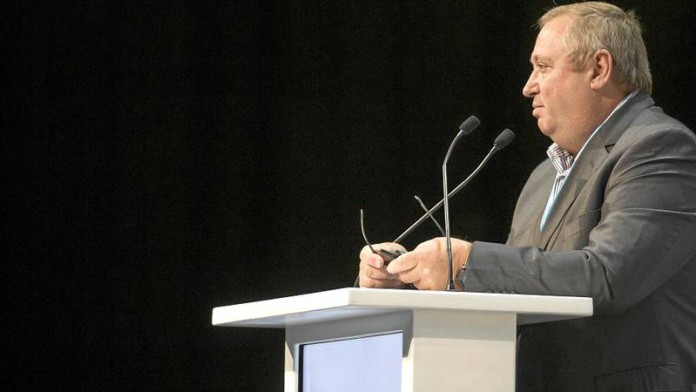
SIBANYE-Stillwater fought against the effects of the improved rand/dollar exchange rate in the March quarter thanks largely to the first fruits of an operational review which deferred R550m in ‘non-essential’ capital expenditure, of which R250m related to the gold mines in South Africa.
The rand traded at an average value of 11.96 in the quarter compared to an average of 13.63 in the December quarter. The currency weakness hit the South African gold operations especially hard which were cash negative. Production was also lower than budgeted, falling 12% quarter-on-quarter to 291,500 oz.
However, Sibanye-Stillwater made further progress in improving efficiencies at its South African platinum group metal (PGM) operations whilst the Stillwater mine in the US, unaffected by the rand, turned in a huge performance. Its all-in sustaining costs (AISC) came in at $632 per ounce, well below the $766/oz AISC estimate of Goldman Sachs which described the performance in a note as “… a strong surprise”.
Adjusted earnings before interest, tax, depreciation and amortisation (EBITDA) from the South African PGM operations of R258m for the March 2018 quarter, increased by 18% relative to the comparable quarter in 2017. Further cost reductions and a 4% higher average 4E PGM ZAR basket price, resulted in the adjusted EBITDA margin increasing from 7% for the March 2017 quarter to 9% for the March 2018 quarter.
The overall outcome from a pre-tax perspective was a 30% year-on-year improvement to R1.58m whilst net debt to EBITDA was cut to 2.4x at end-March from a net debt to EBITDA ratio of 2.6x as of December 31. Shares in Sibanye-Stillwater traded up just over 1.5% in the first hour on the Johannesburg Stock Exchange.
Sibanye-Stillwater said its operational teams were targeting further annualised savings and accelerating further synergies across the group, but its South African gold mines will be a disappointment. The safety performance at the mines was described as “poor” the effects of which were exacerbated by the lower rand gold price. The outcome was a hefty 62% slide in EBITDA for the quarter to R374m.
It said lower production would be caught up in the remainder of the year and that there was no need to adjust the forecast output guidance of between 1.24 million to 1.29 million oz. The group also noted a depreciation in the rand in the current quarter. “This bodes well for a further improved financial performance from the South Africa operations,” said Neal Froneman, CEO of Sibanye-Stillwater in his March quarter commentary.
The rand is today at 12.66 to the dollar. It weakened 5% against the dollar in April representing a four month low.
In April, Sibanye-Stillwater unveiled a near doubling in a revolving credit facility on better terms, effectively signalling it did not intend equity finance in order to support the balance sheet. Froneman said the point plainer today: “The group has no need or intention to issue equity in order to reduce debt,” he said. “Even under significantly more challenging economic circumstances, this remains an unlikely scenario.”
However, inventory financing and streaming agreements appear to be preferred financing options which Froneman said were under consideration.
RBC Capital Markets said in a note that Sibanye-Stillwater’s commodity and geographic diversification strategy had been particularly beneficial in the quarter. “With the PGM operations providing 76% of the EBITDA and ~100% of the cash flow, the diversification strategy is very much showing its benefits,” it said.








